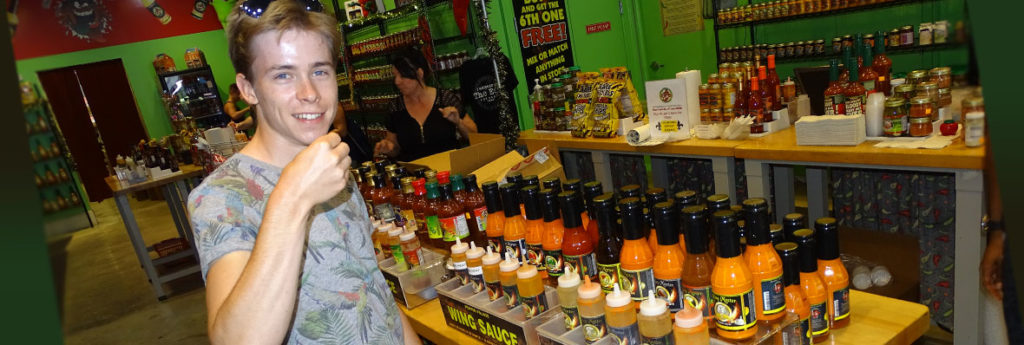I’ve always dreamed of going to New Orleans, but probably not for the reasons you’d think. Unlike many my age (22), who choose to visit the city for Mardi Gras (Feb. 25 this year), my plans for the Big Easy did not involve boozing on Bourbon or carousing in the French Quarter. Instead, I wanted to fill up on food, get high on history and be moved by music. And while I had worried that I may have set the bar too high, when I at last visited a couple of months ago, I found that I could never have imagined anything like the real deal.
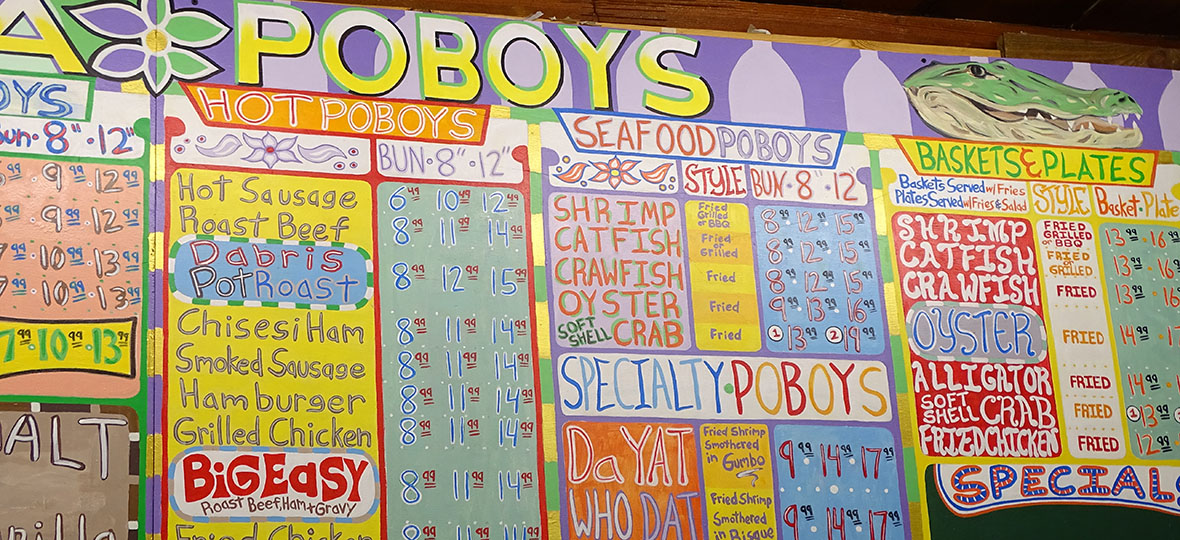
If there was one thing that I was especially eager to experience, it was the food. Since I can really pack it away, I made it a personal mission to try as many staples of the local cuisine as possible, from po’boys to gumbo, catfish, muffulettas, and boudin. As there are only so many meals in the day and my time in town was limited, I discovered that a great way to achieve my goal was taking a food tour (there are many options available, but we booked the excellent Dr. Gumbo).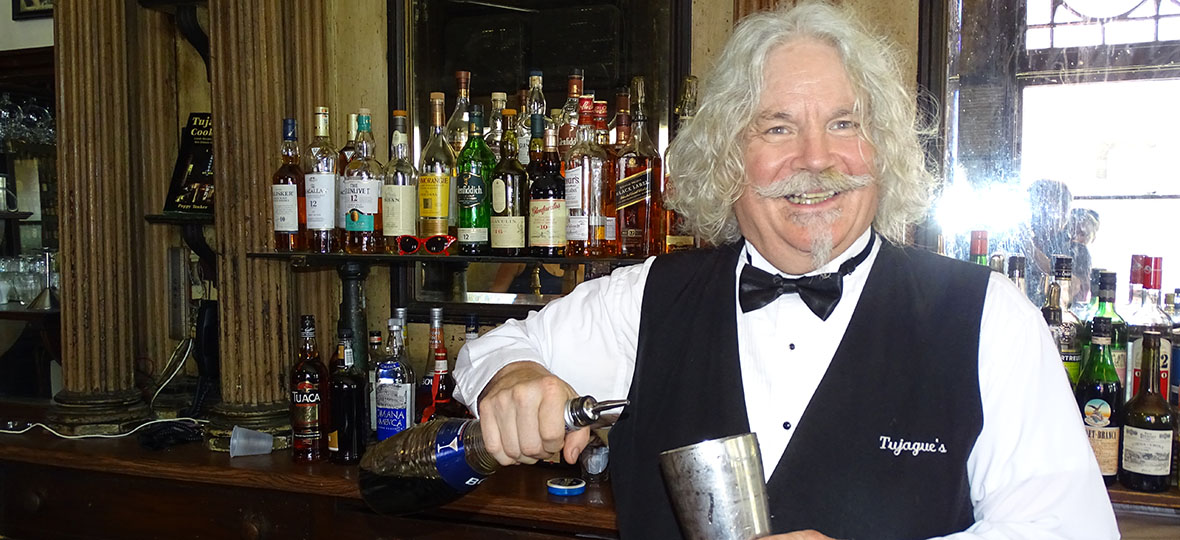
Accompanied by a small group and a knowledgeable local guide, we were led through the streets of the French Quarter, calling in some of the city’s most notable eateries and shops. There were pralines at New Orleans’ oldest candy store, Laura’s Candies, and hot sauce at the Pepper Palace, where one is actually required to sign a waiver in order to sample their supreme searing sauce, “The End.” Alas, at historical Tujague’s, which claims to have invented the Grasshopper cocktail, I deferred the pleasure to my (alcohol-consuming) tour companion.
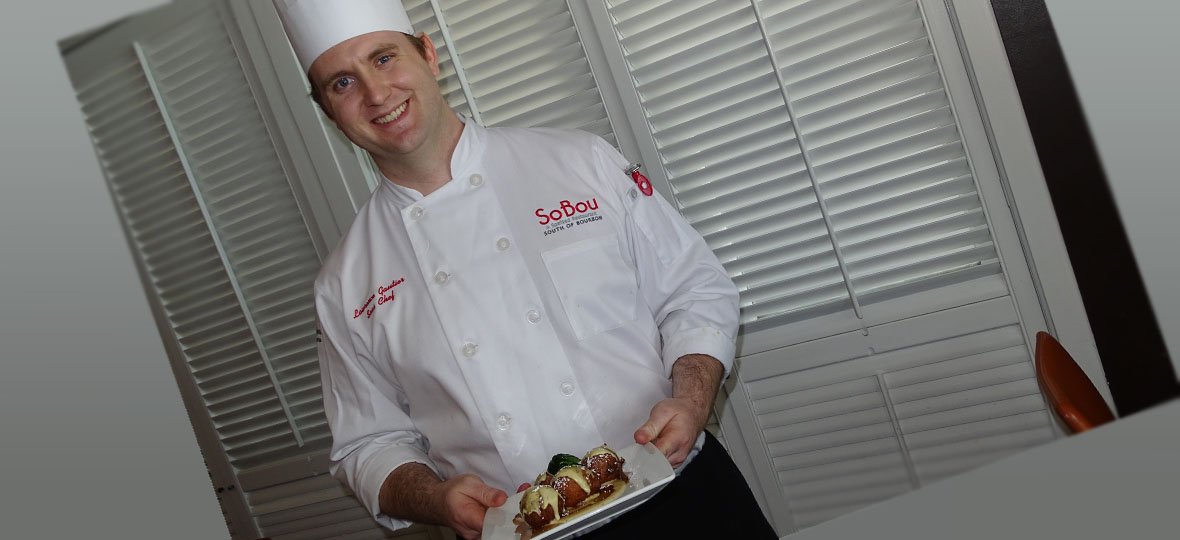
The greatest revelation of the tour, however, were the sweet potato beignets at SoBou. I had devoured a heaping helping of the famous New Orleans fritters at Café Beignet only a day prior, but nothing could have prepared me for the SouBou specialty; warm and soft with perfect sweetness, drizzled with a chicory coffee glaze and dusted in powdered sugar, they might just be the best thing I’ve ever eaten!
Of course, we sampled the ubiquitous po’boy (poor boy) sandwich, but also required subsequent visits to famous Johnny’s and local favourite Killer PoBoys to check off the holy trinity of fillings – catfish, shrimp and oyster. And, of course, there was enough gumbo to fill a Louisiana swamp (though I still maintain that one can never have too much gumbo), such as at historic Tableau, a classic French Quarter establishment with ornate cast iron balcony.
In New Orleans, even a typical hot dog – the most ordinary of foods— tastes better, I learned. Like the phenomenal frankfurter I downed at Dat Dog – alligator-based and loaded with jalapeños, grilled onions and a spicy creole mustard for an extra kick.
While the tour allowed us to sample some of New Orleans’ signature dishes, we were also able to sink our teeth into some of the city’s history as each food stop was prefaced with the unique story behind the dish we were devouring, or, in the case of Tableau, the historic building itself.
We learned that the city’s unique cuisine is a blend of mainly French, Spanish and African cooking styles and that in addition to the influences from New Orleans’ many multi-ethnic settlers, the geography of the city itself – situated as it is essentially in the middle of a swamp – influenced its flavours and cooking. For example, since carrots don’t grow in bogs, early French settlers were forced to use green peppers instead, which, with celery and onions, eventually became the foundation of creole cooking.
In the end, with a full belly, powdered sugar on my chin and a new love for grilled ‘gator, I can confidently claim that my mission was fulfilled – at least when it came to the food.
MUSIC
But another equally important goal of mine was finding authentic music in a city that is renowned for its jazz and blues. However, while famed Bourbon Street is evidently the place to be if you want bourbon, it is not the musical mecca I had expected and rocks to a more mainstream beat than authentic bebop and blues.
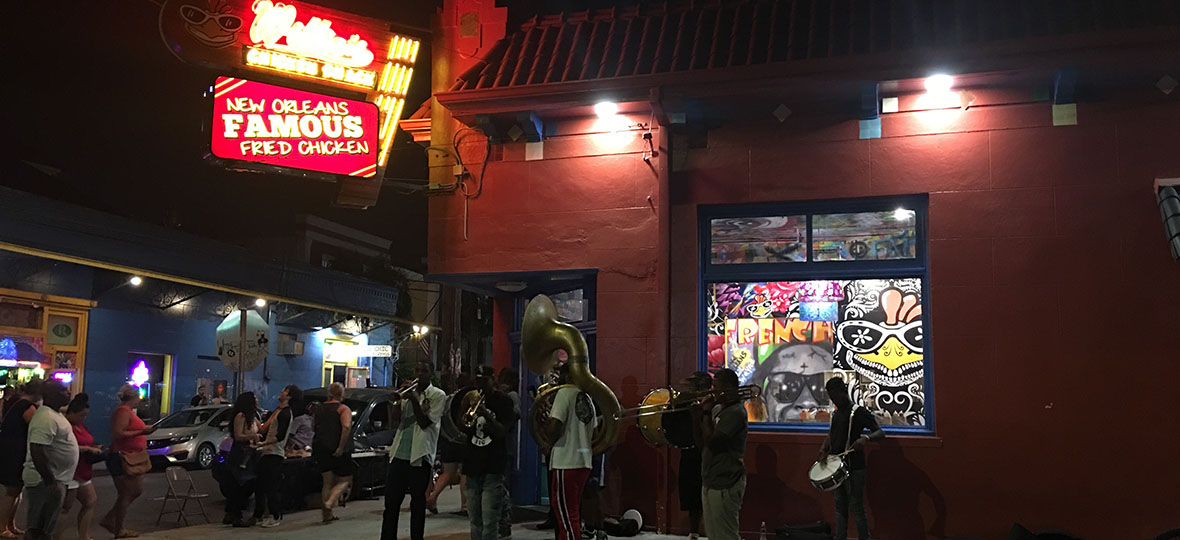 Fortunately, we found Frenchman Street. On the east side of the Quarter, just past the French Market, this short, contained street is instantly authentic and the kind of place locals go for a night out, and specifically for jazz and blues. To the soundtrack of a brass band playing on the corner, New Orleans style, visitors can barhop at a dozen or so venues, each boasting live music and only sometimes a cover charge or minimum drink order.
Fortunately, we found Frenchman Street. On the east side of the Quarter, just past the French Market, this short, contained street is instantly authentic and the kind of place locals go for a night out, and specifically for jazz and blues. To the soundtrack of a brass band playing on the corner, New Orleans style, visitors can barhop at a dozen or so venues, each boasting live music and only sometimes a cover charge or minimum drink order.
After an hour of sampling the sounds and colour of the street, and poking through the unexpected Palace street market, we settled in at the Nola Cantina for a couple of sets of blues from a local band, me happily sipping chicory coffee as the solution to the one-drink minimum for someone who doesn’t drink.
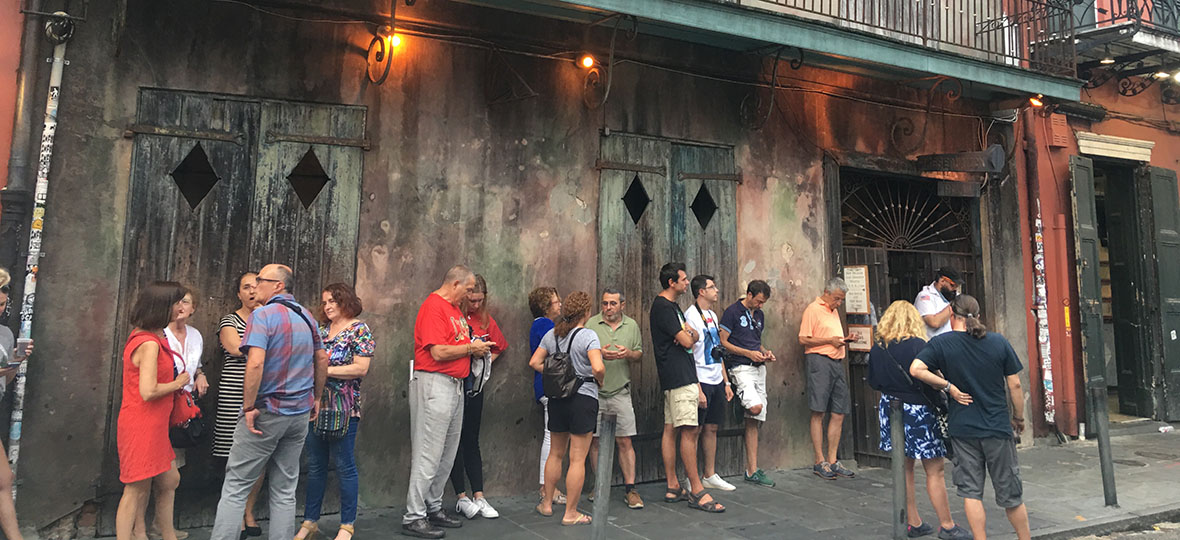
Of course, we also had to make a pilgrimage to Preservation Hall, where the house band – the Preservation Hall Jazz Band – is truly in a league of its own. My father had introduced to me to the legendary Dixieland band, having played me their CDs as a child (along with Fats Domino), possibly sparking to my desire to go to New Orleans in the first place.
The only problem was, when it came time for the performance, we couldn’t find the hallowed hall, despite it being located in the heart of the Quarter within spitting distance of Bourbon. We had searched up and down N. Peter St. until finally giving up and asking for directions, only to be directed to a non-descript doorway and rusted sign right beside us. Notwithstanding the queue lining up down the street, we could have been forgiven for having passed it by. The building itself is old and rundown and looks quite abandoned – not quite the grand performance venue I had imagined – with a similar scarcity of décor inside, where the “hall” accommodated approximately 50 people in a tiny room and front row patrons are sometimes required to dodge a player’s trombone slide.
But as unimpressive as the surroundings are, the band is quite the opposite. Comprised of a unique collective of about 100 local musicians, the half dozen or so performers on any night (or afternoon) ramble through familiar and sometimes not-so-familiar classics, often taking requests from the audience, and occasionally veering off into virtuosic solos or intriguing backstories. In retrospect, my only regret about the amazing experience is that I didn’t request they play “The Saints” (When the Saints Go Marching In) – something for my next visit I suppose!
HISTORY
Though history overtly drips from every pore of the city, it’s easy to scratch the surface of a city that dates to 1718 and was both the capital of French Louisiana and a cosmopolitan city on the Mississippi River at the Gulf of Mexico. And a place where much is made of its ghosts.
So, what better way to explore both than a cemetery and voodoo tour?
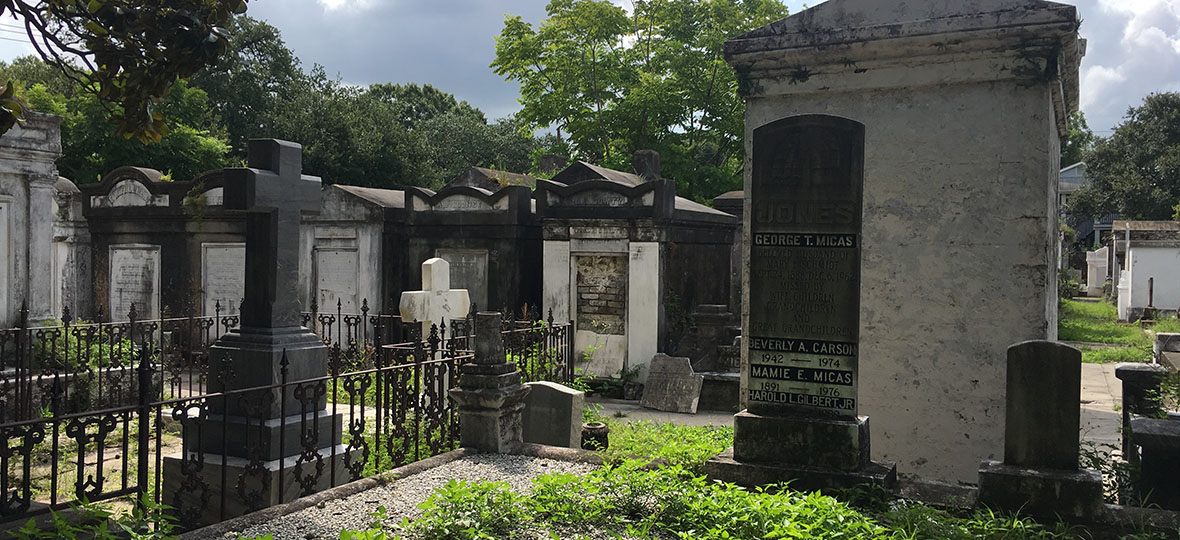
And, while one can easily visit some of New Orleans’ cemeteries without the aid of guide (Lafayette Cemetery No. 1 is beautiful and easily doable on one’s own, after taking a fun ride to the Garden District on a signature New Orleans trolley) we found that the information provided by the guide enhanced our experience in the official “City of the Dead,” the St. Louis Cemetery No. 1, in the way a guidebook never could.
For example, the guide gave basic facts, such as that tombs in New Orleans are above ground because regular flooding created macabre processions of floating coffins in the streets, but also offered stories and insights about notable figures from the city’s past, long-gone soldiers, and even ordinary citizens, now resting in peace. Such as city icon Marie Laveau, whose crypt is apparently one of the most visited (along with Elvis) in the US The 19th-century healer and spiritualist’s talents were apparently miscast as voodoo, earning her the nickname “the Voodoo Queen.”
PLANTATION COUNTRY
For all its fun, an essential sidebar to any New Orleans visit is a trip to “Plantation Country,” where one can amazingly find themselves in another world literally on the outskirts of the city. One can breakfast on beignets in the French Quarter and be on a peaceful plantation or in the middle of a swamp by lunch. And back again by dinner.
Or better still, visitors can even stay a night or two at some of the former sugar plantations, like Destrehan, which has two historic cottages outfitted with modern amenities.
We managed to tour four of the 10 estates along the Old River Road – the aforementioned Destrehan, along with San Francisco, Laura and Oak Alley, and while I feared that by the final stop I’d have heard all there is to hear about sugar cane and the mighty Mississippi, each one proved to be entirely unique, with its own charm and backstory. Destrehan, for example, focusses largely on the lives of the slaves that worked there; Oak Alley has its famed avenue of (oak) trees; and Laura has a beautiful main house and gardens and a particularly interesting family history.
SWAMP THING
A must-do experience of an entirely different kind is a trip into the swamp and local outfitters like Swamp Adventures and Cajun Pride Swamp Tours do just that, taking guests by boats through narrow, winding waterways bordered by Cypress sentinels overhung by Spanish moss and churning with gators, quickly summoned from the murky waters by fresh meat offered to attract them. There are also birds, racoons, snakes and all manner of other creatures to amaze and delight, and perhaps a guide’s tales of life in the swamp, in the present and in days past.
With so much to do – and I haven’t even mentioned the museums, Audubon zoo, venturing into voodoo shops, having one’s fortune told at Jackson Square, cruising the Great River by Steamboat, sipping coffee on a balcony overlooking the French Quarter, and did I mention eating po’boys? – New Orleans is a bucket list experience I’m thrilled I filled. And having done it utterly alcohol free, I can promise I will remember every moment!
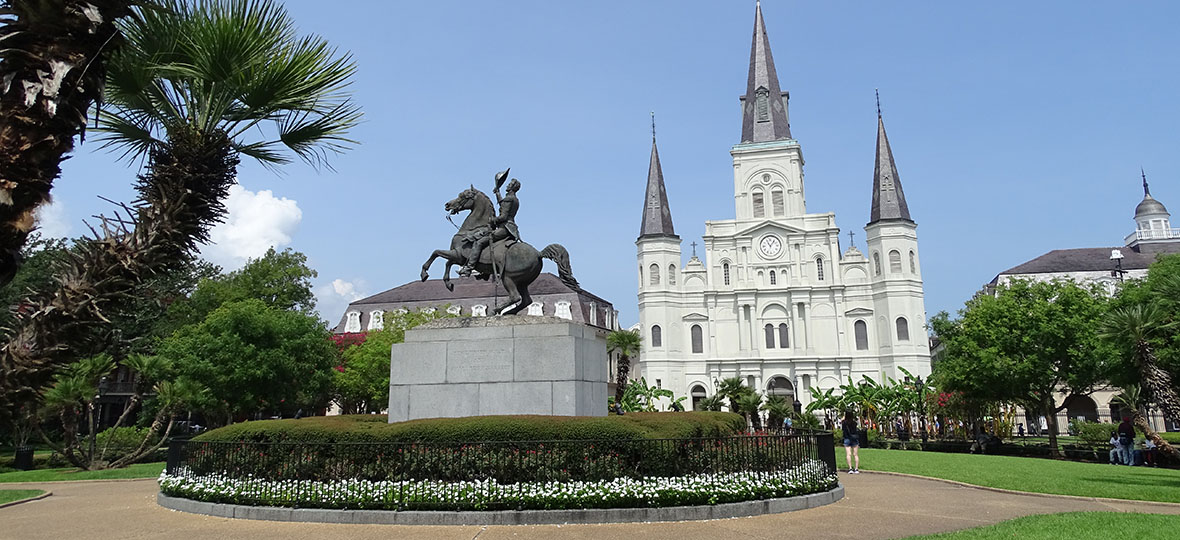
Related article: Blues Traveller

